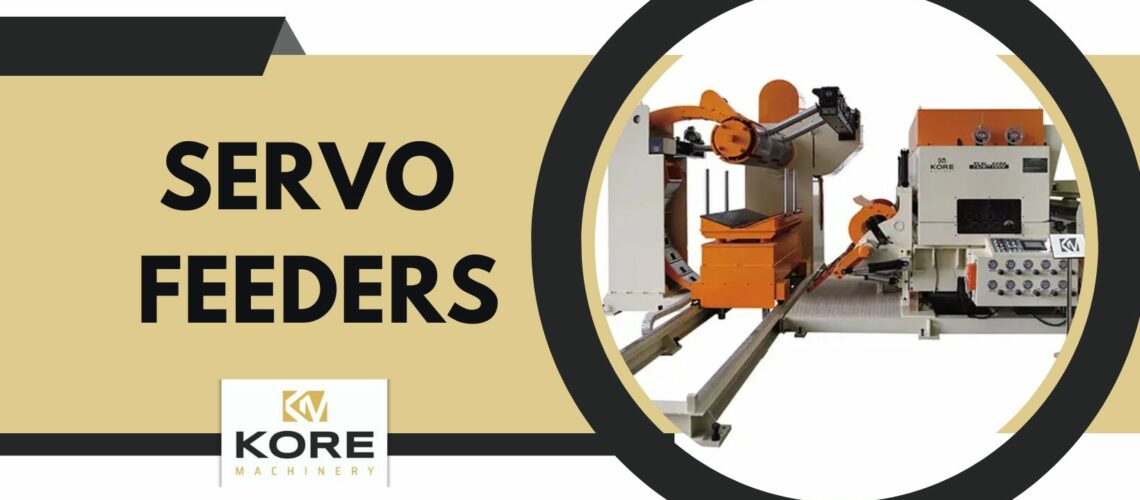Servo Feeders Explained
A servo feeder is a sophisticated device that precisely feeds material into a machine for stamping, cutting, or forming. Unlike traditional mechanical or pneumatic feeders, servo feeders have servo motors that provide exceptional control over speed, position, and acceleration. This advanced technology allows for unparalleled precision and efficiency, making servo feeders a vital component in the automation of manufacturing operations.
By integrating servo feeders, industries can significantly enhance their production capabilities. They can adapt quickly to various material types and specifications while minimizing waste and improving overall throughput.
How Do They Work?
The technology behind servo feeders is centered around servo motors, pivotal for achieving high precision and meticulous control in feeding mechanisms. These motors are distinguished by their ability to precisely manage motion variables such as position, speed, and acceleration, courtesy of built-in encoders that provide real-time feedback. This feedback loop allows for adjustments on the fly, ensuring exceptional accuracy.
Complementing the servo motors, servo feeders often incorporate advanced technologies such as Programmable Logic Controllers (PLCs) and sophisticated user interfaces. PLCs serve as the brains of the operation, orchestrating the feeder’s movements based on pre-set parameters and real-time data, optimizing the process flow, and reducing manual intervention.
User interfaces, on the other hand, provide a user-friendly platform for operators to input commands, monitor operational status, and make adjustments as needed, further enhancing the feeder’s functionality and ease of use.
Together, these technologies make servo feeders integral to modern manufacturing setups, driving efficiency and precision.
Benefits of Using Servo Feeders
Servo feeders offer numerous benefits that streamline manufacturing processes and enhance productivity across various industries. Their advanced technology provides significant advantages over traditional feeding mechanisms, such as:
- Improved Accuracy: Servo feeders deliver exceptional material positioning and alignment precision, which are crucial for high-quality production outputs.
- Faster Setup Times: With programmable settings and easy-to-use interfaces, servo feeders can be quickly configured for different jobs, significantly reducing downtime between production runs.
- Flexibility in Material Handling: These feeders can accommodate various materials and sizes, making them versatile for multiple manufacturing needs.
- Enhanced Production Efficiency: By optimizing feed rates and minimizing manual adjustments, servo feeders increase the throughput of production lines.
- Waste Reduction: The precision and control servo feeders provide reduced material waste, contributing to more sustainable manufacturing practices.
- Cost Savings: Improved efficiency and reduced waste lead to lower operating costs, making servo feeders a cost-effective solution for automated manufacturing.
Maintenance and Care Tips
Regular maintenance and proper care are essential to ensure the longevity and optimal performance of servo feeders. Routine cleaning to remove debris and prevent accumulation is crucial, as dirt can impair the feeder’s precision and cause wear on mechanical parts. According to manufacturer recommendations, regular lubrication of moving components is also vital to maintain smooth operation and prevent mechanical failures.
Periodic inspections of the servo motor, drive systems, and controllers are necessary to identify and address early signs of wear or failure, preventing costly downtime. Maintaining tight, secure connections and checking for software updates also ensures the control systems operate efficiently. Common troubleshooting issues often involve inaccuracies in feeding lengths or speeds, typically resolved by recalibrating the servo motor settings or checking for software errors.
Ensuring all parts are aligned and functioning correctly can resolve many operational issues and maintain the feeder’s efficiency and reliability.
KORE Machinery & Servo Feeders
We proudly integrate advanced servo feeder technology across its products, enhancing precision and efficiency in metal processing. Specifically:
- The 3-in-1 NC Servo Straightener Feeder with Uncoiler is designed to streamline workflows by combining straightening, feeding, and uncoiling into one efficient unit, ideal for various industrial applications.
- The TLF3 series, which includes models like the TLF3-700 to TLF3-1100, adapts to different material widths, offering flexibility for various applications.
- KORE’s Slitting Lines for Stainless Steel & Aluminum utilize AC Servo motors, providing superior power control for precise and efficient handling of materials.
- The Press Feeding & Coil Handling Systems feature advanced solutions such as 3-in-1 NC servo straighteners, highlighting KORE Machinery’s commitment to innovation and quality in meeting diverse industrial needs.
Ready To Work Together?
At KORE Machinery, we’re proud of how our servo feeders are revolutionizing manufacturing. With top-notch products like the 3-in-1 NC Servo Straightener Feeder with Uncoiler and the TLF3 series, we are committed to enhancing precision and efficiency in your operations.
As automation technologies evolve, we continue to lead with innovative solutions that meet the industry’s changing needs. Our servo feeders are designed to help you keep pace and maximize productivity.
Interested in learning more about how our servo feeders can benefit your business? Give us a call today at (419) 351-6208.


